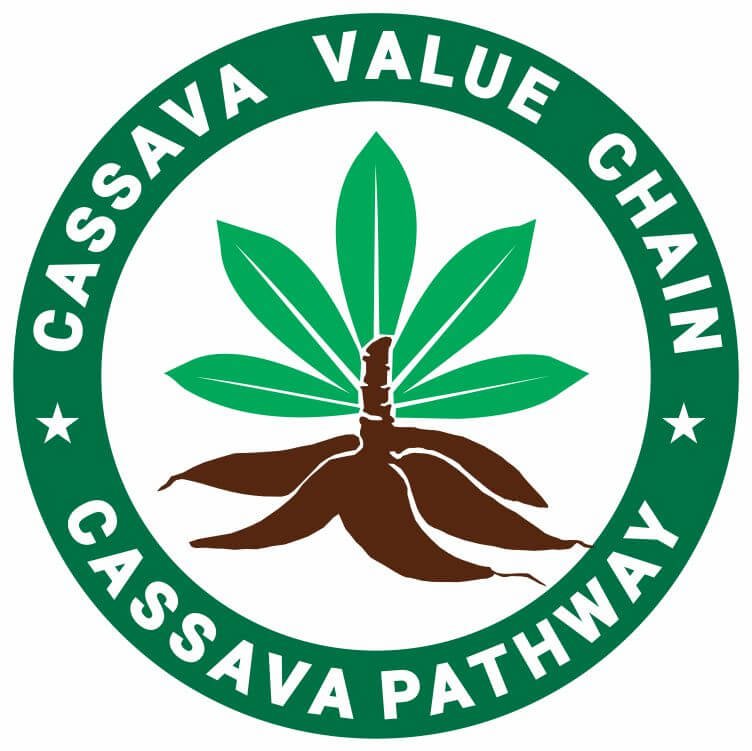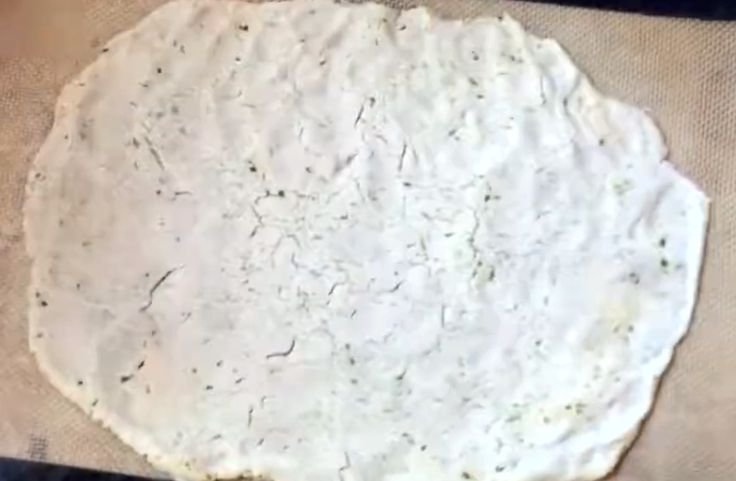The vegan cassava flour pie crust offers a plant-based twist on traditional baking, crispy, tender, and naturally gluten-free. It’s perfect for both sweet and savory pies.
Vegan cassava flour pie crust has become a go-to choice for those who want a wholesome, plant-based version of the traditional cassava crusts made with animal products.
Unlike the regular cassava pie crust that relies on butter, milk, or eggs, this vegan version achieves the same tender, flaky texture using plant-based fats like coconut oil or vegan butter.
What makes it even more appealing is its flexibility; you can prepare it with either cassava flour or freshly grated cassava, depending on your texture preference.
But for this recipe, we are sticking with the cassava flour.
Lightly nutty in flavor and naturally gluten-free, it complements both sweet and savory pies with ease.
Simple to mix, roll, and bake, this crust opens the door to healthier indulgence without sacrificing taste or tradition.
Related: Guide to Vegan Cassava Recipes
Table of Contents
- Why Use Cassava Flour for Pie Crust
- Ingredients for Vegan Cassava Flour Pie Crust
- How to Make Vegan Cassava Flour Pie Crust
- Sweet Vegan Cassava Flour Pie Crust Recipes
- Savory Vegan Cassava Flour Pie Crust Recipes
- Storage and Reheating
- Conclusion
- Frequently Asked Questions (FAQs)
Why Use Cassava Flour for Pie Crust
Cassava flour stands out as a top choice for pie crusts, especially for those following a gluten-free or vegan lifestyle.
Made from the whole cassava root, it delivers a pliable yet sturdy texture ideal for holding pie fillings.
Compared to almond, oat, or coconut flour, cassava flour creates a smoother, more cohesive crust without the density, crumbliness, or dryness that those flours can cause.
Its mild flavor lets the filling take center stage while maintaining a satisfying bite.
Rich in carbohydrates and fiber, cassava flour offers a wholesome option that works equally well for sweet or savory pies.
With its versatility, easy handling, and dependable baking performance, cassava flour has become a favorite among home bakers seeking a healthier, reliable, and delicious base for their vegan and gluten-free creations.
Ingredients for Vegan Cassava Flour Pie Crust
Making your vegan cassava flour pie crust is simpler than you might think.
With just a few wholesome ingredients, you can achieve a crust that’s flaky, tender, and perfect for any filling.
Cassava Flour
Flour from cassava gives your pie crust its structure and mild flavor.
Made from the whole cassava root, it’s naturally gluten-free and easy to handle.
It holds together beautifully when baked, keeping your crust firm yet chewy.
Cassava flour also absorbs liquids well, creating a smooth dough that can be rolled out without cracking or tearing.
Plant-Based Fats
Coconut oil, vegan butter, or vegetable shortening bring richness and that classic flaky texture to your crust.
Coconut oil gives a light tropical aroma, while vegan butter provides a familiar buttery taste.
These fats help create tender layers that crisp up perfectly in the oven.
Binding Agents
Plant-based milk, water, or a flax or chia egg keeps the dough cohesive and flexible.
They help bind the flour and fat together, preventing dryness.
Using these ingredients makes your dough easier to shape and handle while giving your baked crust a soft yet sturdy finish.
Flavor Additions
A pinch of salt sharpens the flavor, while a touch of coconut sugar or maple syrup adds subtle sweetness for dessert pies.
You can also mix in cinnamon or nutmeg for warmth, or keep it plain for savory fillings.
These small touches make your crust more flavorful and adaptable.
Related Posts
How to Make Vegan Cassava Flour Brownies
Vegan Cassava Flour Waffles Without
Animal-Free Cassava Flour Pancake Recipe
Vegan Cassava Flour Bread Recipe
How to Make Animal-Free Cassava Flour Cookies (Vegan)
How to Make Vegan Cassava Flour Pie Crust
Making your own vegan cassava flour pie crust is simple and rewarding.
With a few easy steps, you can achieve a flaky, tender base perfect for any sweet or savory pie.
Step 1: Combine the Dry Ingredients
Start by mixing cassava flour and salt in a large bowl. Use two cups of cassava flour and half a teaspoon of salt.
Stir until the mixture is evenly blended. This step ensures the salt distributes properly, giving your crust a balanced taste throughout.
Step 2: Cut in the Fat
Add your plant-based fat: coconut oil or vegan butter works best. Keep it solid but slightly soft.
Use a pastry cutter or your fingers to mix until it looks crumbly. The texture should resemble coarse sand.
This is what gives the crust its flakiness once baked.
Step 3: Add the Liquid
Pour in cold water or plant-based milk gradually, one tablespoon at a time. Mix gently until the dough begins to hold together.
You want a soft, flexible dough that’s not sticky or dry.
Once it comes together, shape it into a ball and flatten it slightly into a disk.
Step 4: Chill the Dough
Place the dough in the refrigerator for at least 30 minutes. This resting time allows the fat to firm up and the moisture to distribute evenly.
Chilling makes it easier to roll out later and prevents cracking during baking.
Step 5: Roll and Shape the Crust
Dust your work surface with a little cassava flour. Roll the dough out to about a quarter inch thick.
Gently lift it and place it in your pie dish, pressing it into the corners.
If small cracks appear, press them together with your fingers.
Step 6: Pre-Bake for Stability
For pies with moist fillings, pre-bake the crust at 350°F (175°C) for about 10 minutes.
This helps create a firm base that won’t turn soggy once filled.
The result is a crisp, golden crust ready to hold any delicious vegan filling you choose.
Sweet Vegan Cassava Flour Pie Crust Recipes
Using a vegan cassava flour pie crust opens up endless ways to enjoy sweet treats that are gluten-free, plant-based, and full of flavor.
The mild taste and smooth texture of cassava flour make it an excellent base for your favorite dessert pies.
Vegan Cassava Apple Pie
This pie blends the comforting flavors of cinnamon, nutmeg, and tender baked apples within a crisp cassava flour crust.
The dough bakes into a flaky yet sturdy shell that perfectly holds the juicy fruit filling.
Cassava’s gentle flavor complements the apple’s natural sweetness without overpowering it.
As the filling bubbles, the crust turns golden and aromatic, creating that cozy homemade pie aroma.
Serve warm with vegan whipped cream or a scoop of coconut ice cream for a nostalgic, heartwarming dessert everyone can enjoy.
Chocolate Vegan Cassava Pie
For chocolate lovers, this cassava flour pie crust creates the perfect foundation for a rich and smooth dessert.
The crust adds a subtle earthy note that pairs beautifully with creamy vegan chocolate custard or ganache fillings.
Cassava flour keeps the texture firm enough to slice yet soft enough to melt in your mouth.
When baked, it develops a delicate crispness that complements the silky interior.
Top it with shaved dark chocolate or a drizzle of coconut cream for an elegant, restaurant-style presentation that feels indulgent but stays fully plant-based and gluten-free.
Pumpkin Spice Cassava Pie
The pumpkin spice cassava pie captures the cozy feeling of autumn in every bite.
Cassava flour’s mild sweetness enhances the spiced pumpkin filling, letting the flavors of cinnamon, clove, and ginger shine.
The crust holds its form while staying tender, offering the perfect balance to the smooth, creamy filling.
This pie bakes into a fragrant centerpiece that fills your kitchen with warmth and nostalgia.
Ideal for holidays or weekend baking, it delivers the comforting taste of classic pumpkin pie in a wholesome, gluten-free, and vegan-friendly form everyone will appreciate.
Savory Vegan Cassava Flour Pie Crust Recipes
A vegan cassava flour pie crust is perfect for savory dishes that are hearty, wholesome, and gluten-free.
Its mild flavor and sturdy texture make it an ideal base for many comforting meals.
Vegan Cassava Quiche
With cassava flour as the base, you can create a delicious vegan quiche that’s creamy, filling, and packed with nutrients.
The crust bakes into a firm yet tender shell that holds a smooth tofu and spinach filling beautifully.
Add onions, bell peppers, or mushrooms for more depth. Turmeric and nutmeg bring a gentle warmth that enhances the flavor without overpowering it.
Every bite combines the crispness of the crust with the soft, savory filling, making it perfect for breakfast, brunch, or a light dinner shared with loved ones.
Vegetable Cassava Pot Pie
This vegetable cassava pot pie is comfort food at its finest.
The cassava flour crust forms a golden, flaky top that seals in a rich filling of carrots, peas, potatoes, and onions simmered in vegetable broth.
The natural flavor of cassava complements the savory filling, creating a balanced, hearty dish.
Once baked, the crust turns slightly crisp on the outside while staying soft underneath.
Each serving feels nourishing and satisfying, ideal for cozy evenings or family meals.
It’s a wholesome, gluten-free version of a classic favorite that everyone at the table can enjoy.
Mushroom Cassava Tart
The mushroom cassava tart celebrates earthy flavors in a simple yet elegant way.
The cassava crust bakes into a light, crisp base that supports a savory filling of sautéed mushrooms, garlic, and herbs.
The cassava flour’s mild taste allows the umami of the mushrooms to shine through.
You can sprinkle plant-based cheese or nutritional yeast on top for extra richness.
The result is a flavorful, aromatic tart with a beautiful golden crust.
Serve it warm as a light meal, appetizer, or centerpiece for a dinner gathering that feels both comforting and refined.
Storage and Reheating
To keep your vegan cassava flour pie crust fresh and flavorful, proper storage is key.
For unbaked dough, wrap it tightly in plastic wrap or seal it in an airtight container.
It lasts about a week in the fridge or up to three months in the freezer when shaped into a disc and wrapped securely.
Thaw it overnight in the refrigerator before rolling. For baked crusts, let them cool completely before storing in an airtight container.
Refrigerate for up to four days or freeze for two months. When reheating, use an oven preheated to 350°F (175°C) for 10–15 minutes to restore crispness.
Avoid microwaving to prevent sogginess. These steps help your cassava pie crust maintain its texture and taste, making it perfect for future desserts or savory pies.
Conclusion
The vegan cassava flour pie crust redefines traditional baking by offering a gluten-free, dairy-free, and egg-free alternative that still delivers a flaky, tender, and satisfying texture.
Using cassava flour gives you a sturdy yet soft crust that works beautifully for both sweet and savory pies.
Its mild, nutty taste complements a variety of fillings without overpowering them, while plant-based fats like coconut oil or vegan butter provide the perfect crisp finish.
Whether you’re baking a holiday pie or a wholesome weekday treat, this crust makes healthy, mindful eating simple and enjoyable.
With its adaptability and reliable results, it’s proof that plant-based baking can be just as comforting, flavorful, and indulgent as the classics.
Frequently Asked Questions (FAQs)
Can tapioca or almond flour replace cassava flour in a pie crust?
Tapioca flour can help with binding but won’t provide structure. Almond flour works partially but should not fully replace cassava for proper texture and taste.
How does cassava flour pie crust taste compared to wheat crust?
Cassava flour has a mild flavor that complements both sweet and savory fillings, offering a satisfying bite while remaining completely gluten-free.
Can a cassava flour pie crust be prepared ahead of time?
Yes, you can make the crust up to two days in advance. Wrap securely and refrigerate to maintain freshness and texture.
How can I adjust the texture of the cassava pie crust?
Add coconut oil or vegan butter for flakiness, or reduce fat for a softer crust. Experiment to achieve your preferred texture.
Is cassava flour pie crust suitable for gluten-free baking?
Yes, using cassava flour ensures a completely gluten-free crust, making it ideal for vegan and gluten-sensitive diets while maintaining excellent flavor and structure.
References
- Gluten Free Pie Crust made with Cassava (vegan, grain free)
- Flaky Paleo Pie Crust with Cassava Flour

Chimeremeze Emeh is a writer and researcher passionate about Africa’s most transformative root crop—cassava. Through his work at cassavavaluechain.com, he explores the entire cassava industry, from cultivation and processing to its diverse applications in food, health, and industrial use.
He also writes for palmoilpalm.com, where he shares his extensive experience and deep-rooted knowledge of palm oil, covering red palm oil, palm kernel oil, and refined products. His work there reflects his lifelong connection to agriculture and his commitment to promoting sustainable value chains in Africa.
Driven by curiosity and purpose, Chimeremeze aims to shed light on how cassava continues to empower communities, strengthen food systems, and link traditional farming wisdom with modern innovation.

